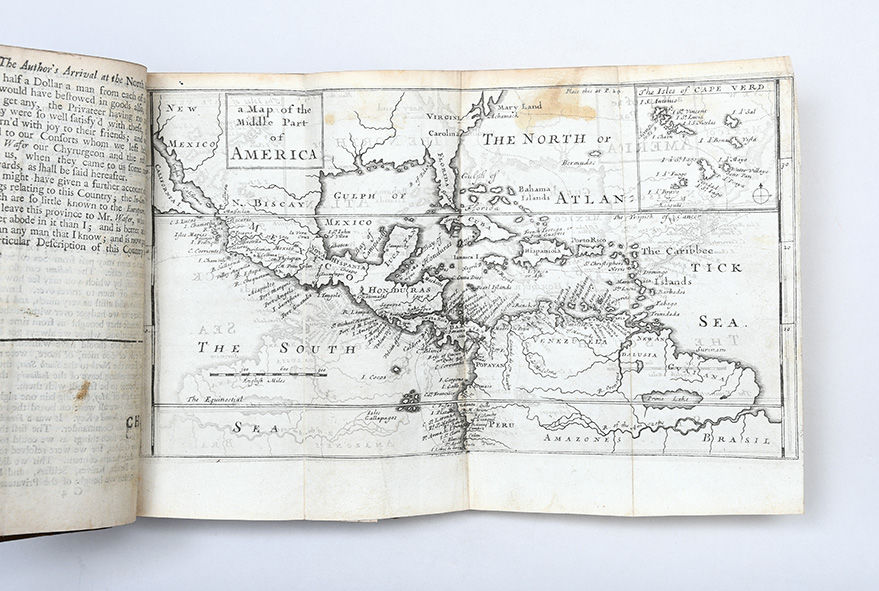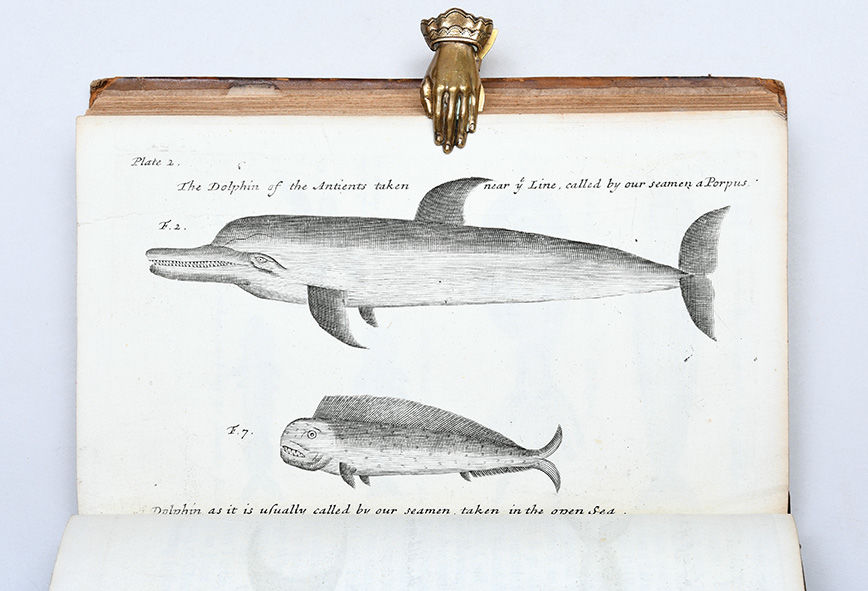London: for James Knapton,, 1697-1709. A great continent made real First editions, a complete set, of one of the most remarkable records of maritime adventure. These works contain the account of Dampier's first circumnavigation from 1679 to 1691, alongside that of his 1699 mission to explore the east coast of Australia. William Dampier (1651-1715), explorer, navigator, and buccaneer, became the first Englishman to explore parts of Australia and the first person to circumnavigate the globe three times. In 1679, Dampier joined captain Bartholomew Sharp, twice visiting the Bay of Campeche in Central America. He subsequently became engaged with the privateer John Cooke in 1683 on the Batchelor's Delight, entering the Pacific via Cape Horn and raiding Spanish possessions on the east coast of South and Central America. Dampier joined privateer Charles Swan on the Cygnet in 1886 to raid the East Indies, landing in the Philippines. After cruising in the South China Sea and the Gulf of Thailand, they reached the western coast of Australia, a region later known as Dampier Land. They anchored at Cygnet Bay, where Dampier went ashore, becoming the first known Englishmen to set foot on Australian soil, making notes on the flora, fauna, and indigenous people he encountered. He returned to England in 1691 as the third English circumnavigator, only preceded by Thomas Cavendish and Francis Drake. Dampier's narrative of the circumnavigation, the New Voyage Around the World "diplomatically did not attempt to exploit the sensational aspects of his adventures, concentrating on hydrographic, geographical, and scientific detail. Rather than condemning him as a pirate, the book won him immediate academic acclaim" (Howgego). His second book, a supplement to the first, includes an account of his life before joining the buccaneers, a description of Campeche, and "A Discourse of Trade-Winds, Breezes, Storms, Seasons of the Year, Tides and Currents in the Torrid Zone". In 1699, Dampier was given command of HMS Roebuck, a 26-gun warship with the mission to circumnavigate Terra Australis. The Pacific cruise was "the first attempt at a voyage planned for the deliberate purpose of scientific exploration" (Shipman, p. 30). Dampier was hindered from the start by a fractious crew, "but he fell short of discovering Australia's bounties by again restricting himself to the barren north-west coast (AugustSeptember 1699) and then sailing toward New Guinea, hoping to round the eastern coast of Terra Australis" (ODNB). He explored the Dampier Strait between New Britain and Rooke Island, thereby establishing for the first time the topology of the northern coast of New Guinea. The Roebuck sank at Ascension Island in 1701, and Dampier returned to London in an East Indiaman carrying about 40 Australian plants. This voyage provided the material for his book A Voyage to New Holland. Back in England, Dampier was court-martialled for mistreating one of his crew, and for a time returned to privateering as a source of income. He undertook a final circumnavigation in 1708, returning to London in 1711, where he retired. Remnants of the 300-ton Roebuck were found in 2001 by a team of divers under the auspices of the Western Australian Maritime Museum. His books were praised for their "straightforward style, graphic descriptions of the flora, fauna, and peoples he encountered, and detailed navigational information were cited in the popular and learned press and were admired by merchants, statesmen, and scientists" (ODNB). These included Darwin, who brought Dampier's books with him on the Beagle, and Cook, who used Dampier's maps of winds and currents on his voyages. Four works, octavo (190 x 112 mm). With 42 engraved maps and plates, many folding. Contemporary panelled calf with alternating light and speckled panels, rebacked to style, spines with raised bands, richly gilt in compartments with floral and geometric designs, red morocco labels, covers with blind fillets, palm or shell corner decorations in blind, slight variation in tooling between vols, vols. I & II with initial "R" on front and back cover, vols. III and IV with initials "R" and "M", edges sprinkled red or brown. Vols. III and IV with old manuscript shelf mark on front free endpapers and front pastedowns with bookplates removed. Minor stripping of leather in places, a few small and discreet repairs, some corners bumped with very slight loss, small chip to lower corner of leaf B1 in vol. I (affecting only two words), a few folding maps with fore-edges trimmed to neatline, a little creased or with short tears, minor occasional foxing and toning, faint marginal tide marks in a few places. A very good set. Hill 417, 419, 420, 421; Borba De Moraes, pp. 242-3 (incorrectly calls for 14 plates and maps in vol. III); Sabin 18374-7. Joseph C. Shipman, William Dampier: Seaman, Scientist, 1935; "William Dampier - The Pirate Who Collected Plants", Smithsonian, National Museum of Natural History, accessible online.























